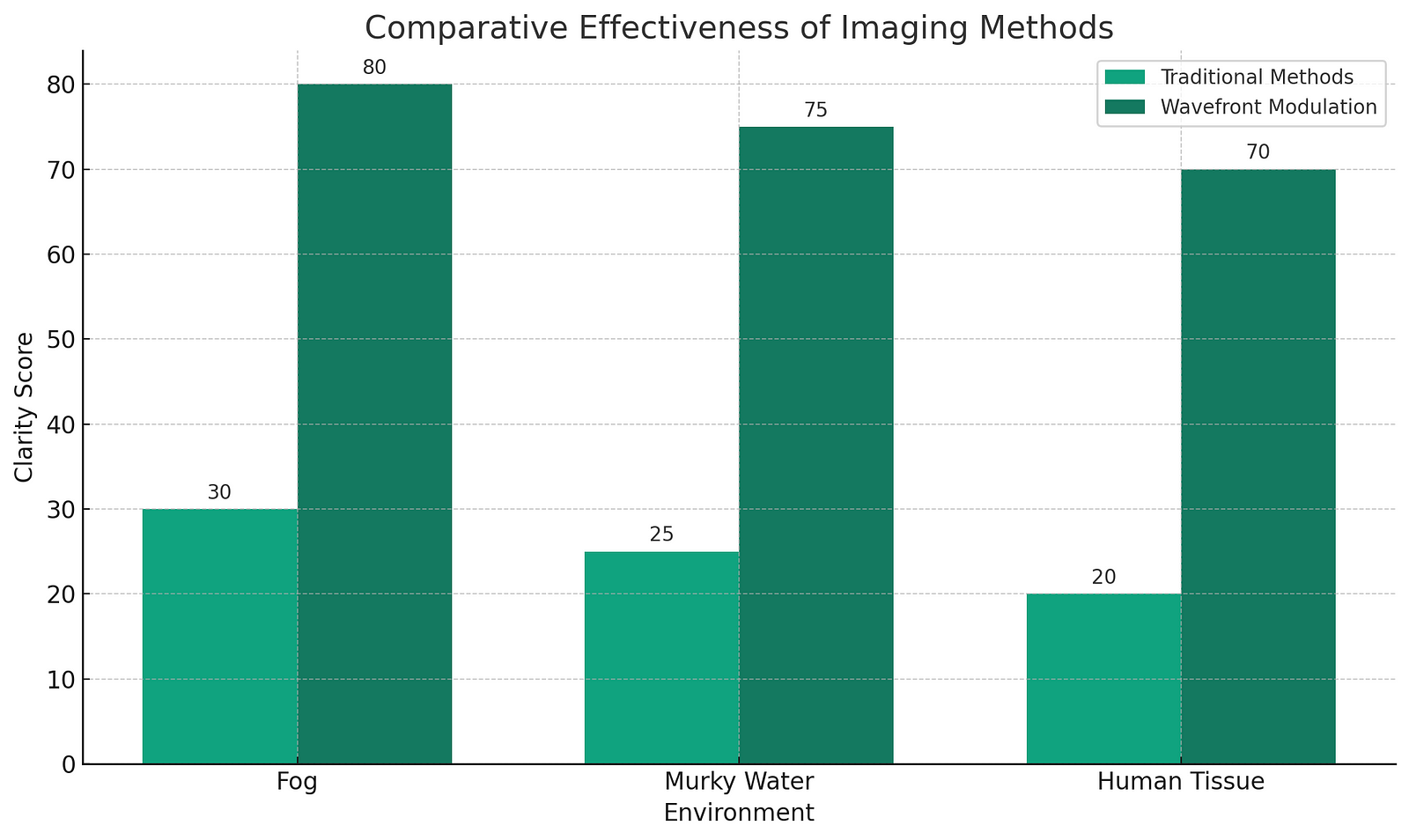
In a world teeming with technological advancements, a new groundbreaking method called wavefront modulation is set to revolutionize how we interact with light and our environment. Developed by a team of researchers from prominent universities, this technique allows us to see through scattering media — environments that traditionally obscure vision, like fog, murky waters, or even human tissue. This technology, although complex, can be thought of simply as a smart manipulation of light to reclaim lost visual information from places and situations where it was previously thought impossible.
The Magic Behind the Modulation
At the heart of wavefront modulation lies the ability to alter the path of light waves intentionally to counteract the effects of scattering. Imagine light as water flowing through rocks; just as you can direct water with carefully placed barriers, wavefront modulation adjusts light paths using devices called spatial light modulators. These adjustments help recover the full picture of what lies behind distortive media. The idea isn’t just theoretical; it’s backed by robust experimental evidence showing that controlled light can indeed retrieve detailed images from chaos.
Enhancing Vision Across Fields
The implications of this technology are vast and varied. In medical imaging, for instance, doctors could see through body tissues for more accurate diagnoses without invasive procedures. Astronomers could peer clearer into space, cutting through cosmic dust. Even everyday gadgets like smartphones could one day incorporate this tech to snap clear photos in foggy conditions. The flexibility of wavefront modulation opens new doors across scientific and practical domains, promising enhancements that were once relegated to the realms of science fiction.
To better understand how wavefront modulation enhances vision across different environments, let’s look at the graph below, which compares the clarity scores achieved by traditional imaging methods and wavefront modulation in various challenging conditions.

A Leap Towards Advanced Imaging
What sets this technology apart is its foundation in machine learning. The researchers used a novel end-to-end learning framework that optimizes both the modulation of the wavefront and the subsequent image reconstruction. This approach ensures that the adjustments made to the light are continually improving through learning, adapting to new challenges and scenarios. The results? Sharper images and a more profound ability to see through visual noise — capabilities that outstrip traditional methods significantly.
Real-World Applications and Impact
The practical tests of wavefront modulation technology have been nothing short of impressive. In controlled experiments, the images recovered using this technique showed dramatically higher quality and detail compared to those processed by conventional methods. This not only proves the effectiveness of wavefront modulation in theoretical setups but also heralds its potential for real-world applications, where clarity and accuracy are paramount.
Surpassing Conventional Limits
Wavefront modulation can enhance image quality beyond the limits of current optical technologies. In experiments, images processed through this method were clearer and more detailed, showing that this isn’t just an incremental improvement but a substantial leap forward in imaging technology.
Machine Learning Integration
This technology integrates machine learning to optimize light modulation dynamically. This means the system gets better over time, learning from past experiences to improve future performance — an intelligent system that evolves.
Versatility Across Conditions
Unlike many optical technologies that are specialized for certain conditions or environments, wavefront modulation proves versatile across a variety of challenging visual scenarios. Whether it’s fog, underwater, or through tissues, the technology maintains its efficacy.
Potential for Non-Invasive Diagnostics
In medical fields, the ability to see through tissues could lead to non-invasive diagnostic procedures, significantly reducing the need for biopsies or surgeries just to get a look inside the human body. This could revolutionize patient care and comfort.
Astronomical Applications
Astronomy could see significant benefits from wavefront modulation, as telescopes equipped with this technology could cut through cosmic dust and other visual interference, providing clearer views of the universe than ever before.
Unveiling the Future
Wavefront modulation stands as a beacon of progress in the technological landscape, illuminating possibilities that extend across medicine, astronomy, and daily technology use. Its integration of machine learning not only enhances its capabilities but also ensures that it continues to improve and adapt. The future of seeing through the unseen looks not only possible but incredibly bright with wavefront modulation, promising a world where visual barriers are less of an obstacle and more of a challenge to be overcome with brilliance and ingenuity.
About Disruptive Concepts
https://www.disruptive-concepts.com/
Welcome to @Disruptive Concepts — your crystal ball into the future of technology. 🚀 Subscribe for new insight videos every Saturday!
Comments
Post a Comment